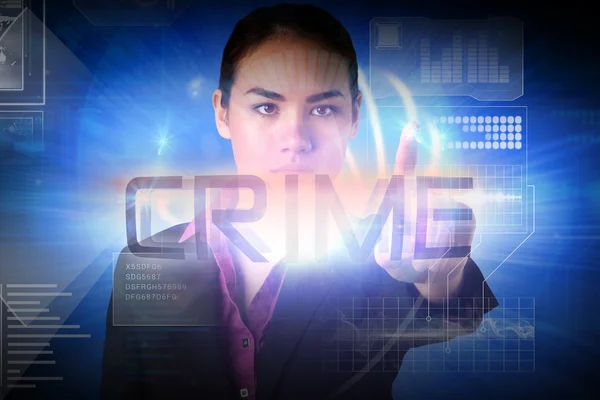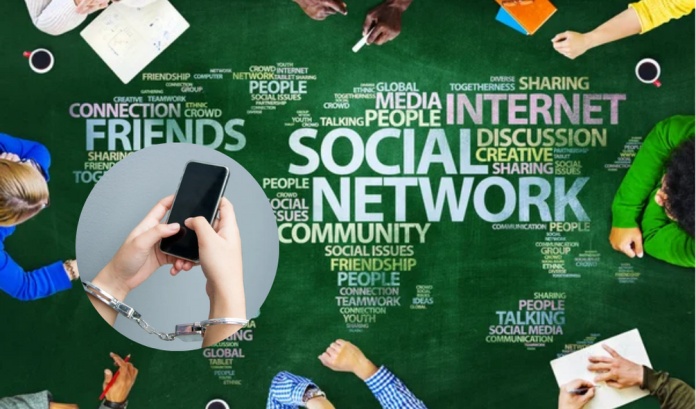The Impact of Social Media on Crime Education, Social media has become an undeniable force in our lives. From staying connected with loved ones to catching up on the latest news, these platforms offer a constant stream of information and interaction. But how does social media impact our understanding of crime? As a crime educator and researcher, I’m here to explore the complex relationship between social media and crime, offering insights to help you navigate this information landscape effectively.
In this article, we’ll delve into the double-edged sword of social media’s influence. We’ll examine how it can sensationalize crime, potentially inspiring copycat crimes, while simultaneously offering a powerful tool for raising awareness, fostering community engagement, and aiding in crime prevention.

We’ll also explore the most common crimes committed on social media platforms and how media coverage shapes public perception. Finally, we’ll address frequently asked questions to empower you to stay safe and informed online.
The Double-Edged Sword: Social Media’s Influence on Crime
Social media can be a valuable resource for staying informed about crime, but it’s crucial to be aware of its potential pitfalls. Let’s explore both the disadvantages and the impact on criminality.
Disadvantages of Social Media
- Sensationalization and Distortion:
The fast-paced nature of social media often prioritizes grabbing attention over providing nuanced information. A 2022 study by the Pew Research Center found that 64% of Americans believe social media news is often inaccurate or misleading.
This can lead to the sensationalization of crime, focusing on the most dramatic elements while neglecting the broader context. Imagine scrolling through your feed and seeing a headline screaming “Shocking Home Invasion!” Fear and anxiety can quickly escalate, leading to a distorted perception of crime rates in your community.
Remember, a single, sensationalized crime story doesn’t represent the overall crime picture. Statistics from the FBI’s Uniform Crime Reporting (UCR) Program offer a more reliable source for understanding national crime trends.
- Copycat Crimes:
The concern exists that graphic depictions of crime on social media, particularly violent acts, can inspire copycat behavior. A 2016 study published in the Journal of Criminal Law and Criminology found a correlation between media coverage of mass shootings and subsequent incidents.
However, the research in this area is complex. While a potential link exists, it’s important to consider other factors that contribute to criminal behavior.
- Criminal Networking and Recruitment:
Social media platforms offer a breeding ground for criminals to connect, share information, and even plan criminal activities. For example, gang members may use encrypted messaging apps to communicate and coordinate activities.
Law enforcement agencies are increasingly aware of this trend and are developing strategies to monitor online criminal activity.
- Privacy Concerns:
Oversharing personal information on social media can make you a target for criminals. Sharing your daily routines, vacation plans, or home address can give criminals valuable insights into your vulnerabilities.
Here’s a tip: Regularly review your social media privacy settings and limit the amount of personal information you share publicly.
Impact on Criminality
The relationship between social media exposure and criminal behavior is a topic of ongoing research. While some studies suggest a correlation between heavy social media use and certain criminogenic factors like social isolation, others haven’t found a direct causal link.
It’s important to remember that correlation doesn’t equal causation. Someone who spends a lot of time on social media may also be struggling with other issues that contribute to their criminal behavior.
The key takeaway? Social media is likely one factor among many that can influence criminal behavior.
Social Media: A Force for Good in Crime Fighting?
Despite the challenges, social media can be a powerful tool in the fight against crime. Let’s explore some key benefits.
Benefits of Social Media
- Crime Awareness and Prevention:
Social media platforms can be used to disseminate real-time crime alerts and safety tips from trusted sources, like law enforcement agencies and neighborhood watch groups. Imagine receiving a notification on your phone about a recent carjacking in your area. This information can empower you to be more vigilant and take steps to protect yourself.
- Community Building and Engagement:
Social media can foster a sense of community and encourage collaboration in crime prevention efforts. Neighborhood watch groups can utilize platforms like Facebook or Nextdoor to share information about suspicious activity and organize watch patrols.
This online space can also be a platform for promoting safety education initiatives and fostering a culture of looking out for one another.
- Crime Reporting and Investigation:
Social media can play a crucial role in crime reporting and investigation. Victims can use platforms to report crimes directly to Victims can use platforms to report crimes directly to law enforcement or share information about incidents with the wider community. Additionally, bystanders may capture crucial video evidence on their phones and share it online, which can aid in investigations.
A 2021 study by the National Institute of Justice found that a significant percentage of law enforcement agencies use social media to gather evidence and solve crimes.
Here’s a tip: If you witness a crime or suspicious activity, be sure to report it to the authorities first. While social media can be a helpful tool for spreading awareness, it’s crucial to prioritize official channels for reporting crimes.
- Raising Awareness of Specific Crimes:
Social media campaigns can be highly effective in raising awareness of specific crimes and promoting safety measures. For example, campaigns targeting cyberbullying or online scams can educate young people and empower them to protect themselves online.
The viral #MeToo movement, which originated on social media, brought national attention to the issue of sexual harassment and assault, creating a space for survivors to share their stories and advocate for change.
The Most Common Crime on Social Media
While traditional crimes can be facilitated or documented on social media, there are also specific crimes that occur primarily online. According to a 2023 report by the Bureau of Justice Statistics, the most prevalent cybercrime experienced by Americans is cyberbullying. This can include offensive messages, threats, or the spread of embarrassing information.
Here are some resources:
- National Crime Prevention Council: https://www.ncpc.org/
- StopBullying.gov: https://www.stopbullying.gov/
The Cyberbullying Research Center: https://cyberbullying.org/
Other common social media crimes include:
- Online Harassment: Similar to cyberbullying but often directed at adults.
- Identity Theft: Criminals can use personal information gleaned from social media profiles to commit financial fraud.
- Online Stalking: Using social media to monitor and harass another person.
- Spreading Hate Speech: Promoting violence or discrimination against specific groups.
Media Coverage of Crimes
The media, both traditional and social, plays a significant role in shaping public perception of crime. News outlets often focus on violent crimes or crimes involving celebrities, which can create a skewed understanding of the real crime landscape.
This focus on sensational stories can lead to increased fear and anxiety, even in areas with relatively low crime rates.
Here are some things to consider when consuming crime-related media:
- Source Credibility: Be critical of the source of the information. Is it a reputable news organization or an unverified social media post?
- Headlines vs. Details: Don’t rely solely on attention-grabbing headlines. Read the full story to get a more nuanced understanding of the event.
- Context Matters: Consider the context surrounding the crime. Are there underlying social or economic factors at play?
Frequently Asked Questions (FAQs)
Q: Can social media posts be used as evidence in court?
A: Yes, in some cases, social media posts can be used as evidence in court. Law enforcement may obtain warrants to access social media accounts, and incriminating posts or messages can be presented as evidence.
Q: How can I stay safe on social media?
A: Here are some tips for staying safe on social media:
- Be mindful of what you share: Limit the amount of personal information you share publicly.
- Adjust your privacy settings: Review and adjust your privacy settings on each platform you use.
- Be cautious about friend requests: Don’t accept friend requests from people you don’t know.
- Think before you post: Consider the potential consequences of your posts before hitting “share.”
- Report suspicious activity: If you see something suspicious, report it to the platform and consider reporting it to the authorities as well.
Q: What are some reliable sources for accurate crime information online?
A: Here are some reliable sources for accurate crime information online:
- Websites of Law Enforcement Agencies: Many law enforcement agencies maintain websites with crime statistics and safety resources.
- Websites of Government Agencies: The FBI’s Uniform Crime Reporting (UCR) Program website provides national crime data.
- Reputable News Organizations: Look for news outlets with a history of accurate and unbiased reporting.
Conclusion
Social media is a powerful tool with the potential to both hinder and help our understanding of crime. By being aware of the potential pitfalls and utilizing the platform’s positive aspects, we can promote safety, foster community engagement, and hold criminals accountable.
Remember, critical thinking and responsible online behavior are key in this ever-evolving digital landscape. By staying informed and using social media wisely, we can work together to create a safer and more informed online environment.
Also Read | The Role of Education in Crime Prevention: Explore How Educational Programs Can Help Reduce Crime Rates

